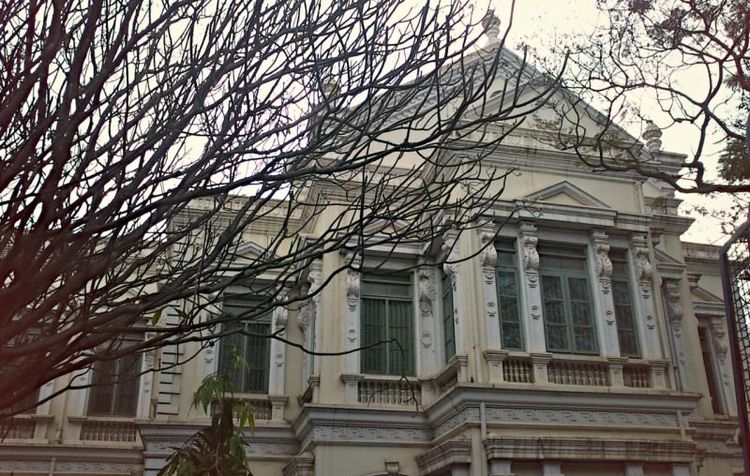For smooth Ad free experience
For smooth Ad free experience
Once a grand structure overlooking the cantonment area and now overshadowed by the ever-expanding concrete landscape, the Mayo Hall stands as a testament to the colonial past of Bangalore.

Mayo Hall Banglore
The bustling Mahatma Gandhi Road, which runs from Trinity Circle Junction to the Statue of Queen Victoria, is a social and retail hub. However, during the British rule, the road served as a military center and was called South Parade Road. The road was given its present name in 1948. The vestiges of the colonial era are scattered around the city center, overshadowed by newer high-rise buildings. One such forgotten landmark is Mayo Hall that was built in 1875 to commemorate Lord Mayo, the fourth viceroy of India, as part of a wider plan to transform the cantonment into an integrated Bangalore Civil and Military Station.
As a result, from the mid 1800s, a sequence of developmental activities began. The army that defeated Tipu Sultan in the Fourth Anglo-Mysore War was relocated from the marshy confines of Srirangapatna to the more salutary city of Bangalore. The new garrison town thus began to expand in 1809. Waves of the crown's officials, soldiers, and their families began to arrive by sea. Sensing the economic potential, the traders followed, bringing in items never seen before in Bangalore, and the city flourished. With this revolution began what can be deemed as the westernization of Bangalore—roads, parks, promenades, churches, schools, hospitals, shopping centers, dance halls, pubs, clubs, and a race course came up to cater to the new residents.
For Bengaluru residents, Mayo Hall is a timeless feature of the city, an easily recognizable sight for anyone who frequents MG Road. While the older residents may remember the building's red-and-white finish—that it bore for over a century until it was refurbished in 2015—the newer residents enjoy the Pompeian structure, with its pedimented windows and typical Greek cornice.
Lord Mayo was appointed the viceroy and governor general of India during this period of tremendous change, and he accelerated the process. During his brief stay in India from 1869 to 1872, he travelled extensively and was deeply inspired by the people and the landscape.
His term, though brief, was mostly appreciated by his contemporaries, owing to the overall governance of the colonial government as well as his specific focus on infrastructure, railways, and agriculture. He was assassinated in 1972 by Sher Ali Afridi, an Afghani prisoner in the Andaman and Nicobar Islands.
Started in 1875 and completed in 1883, the Mayo Hall used neoclassical features with a pedimented driveway and classic columns. The eighteenth-century European architectural style found its way to India through the East India Company, with European travelers and agents constructing their residences in Calcutta and Madras.
Mayo Hall dominated the area in its heyday, gazing over South Parade Road, surrounded with parade grounds and gardens. The structure, which presently houses a unit of Bengaluru Civil Courts, is eclipsed by significantly larger buildings, while another nearby colonial structure, the Victoria Hotel, has been altogether replaced by the Bangalore Central Mall.
Constant efforts are being made by the Indian National Trust for Art and Cultural Heritage and local authorities to restore and revive this marvelous structure. A museum displaying the first surveyed map of Bangalore along with photos of temples and lakes during the Yelahanka Dynasty has been set up, but due to the lack of awareness the museum rarely seas any visitors.
Today, Mayo Hall stands stripped of its greenery and open spaces. The noise of heavy traffic can be heard all the time and the once grandeur hall stands engulfed in the hustle and the ever-changing landscape of Bangalore.
0
You might be interested in reading more from
